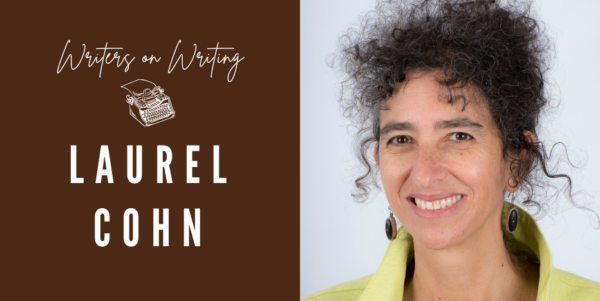
Writers on Writing is our regular conversation with a writer or industry professional about the writing craft, industry insights, and their own practice. This week, we spoke to Laurel Cohn about crucial elements of story including characters, setting and dialogue.
As a developmental editor, what are some of the most common mistakes writers make when approaching story design?
I don’t regard writers as making ‘mistakes’ per se; rather, writing a book-length work is a process of learning and discovery, and it takes time to hone the craft. In terms of story design, writers often underestimate the importance of big picture issues such as theme in helping them shape their work and find coherence in their story. And they often haven’t got their head around the interconnectedness of elements such as plot, character and point of view. A story may simply roll out onto the page in early drafts, but an understanding of how all the elements are working together and how they can be tweaked to achieve the writer’s purpose can take the work to the next level.
What is the relationship between writers and readers and why does it matter?
A writer can never know for sure how a reader will travel through the story they have written, yet the way the writer tells the story establishes how the reader thinks and feels about the characters and the events of the story. Elements such as point of view and narrative voice, as well as choices of what to reveal and conceal for dramatic purposes, all are tools the writer has to manipulate the emotional responses of the reader and to guide their understanding of the ideas you are exploring through the narrative.
What role does spontaneity play when developing a story? Is there any merit to being a ‘pantser’ or should writers all be ‘plotters’?
There is no one ‘right’ way to write a story. Everyone has their own creative process, and undoubtedly spontaneity plays a role. Most writers do a combination of ‘pantsing’ and plotting their first drafts, some leaning towards one end of the scale, some towards the other. When it comes to revising your work over multiple drafts, embracing the challenge of thinking critically about your work, and deepening your understanding of your purpose is important in lifting it to a publishable standard. Thinking in this way opens another whole level of creativity.
Are theme, plot, character, and point of view equally important when it comes to story design?
Yes! In the drafting process you face a multitude of choices about how the events of the story unfold (plot), how the characters might be impacted by the events (character development), and whose perspective we are seeing the events through (point of view). The choices you make are related to what you understand your story to be about (theme). The more you understand about the story you are wanting to tell, the more clarity you will gain about the possibilities you have to play with, and the more likely you are to find the best story design.
Laurel Cohn is a developmental editor passionate about communication and the power of words to engage, inspire and challenge. Since the late 1980s Laurel has been helping writers of all types prepare their work for publication. She is a regular workshop presenter for peak writing organisations in Australia, and also teaches in Europe. She has a PhD in literary and cultural studies.
Join Laurel’s course, Story Design, starting on Saturday 15 March. Enrol here >>
If you want to be the first to read great advice, prompts and inspiration from our incredible tutors, subscribe to our weekly e-newsletter Newsbite.
More from Writing NSW
Check out our full range of writing courses in Sydney, our online writing courses and our feedback programs to see how we can help you on your creative writing journey. Find out about our competitions and opportunities, as well as writing groups across NSW, and sign up to our weekly newsletter for writing events, opportunities and giveaways.

